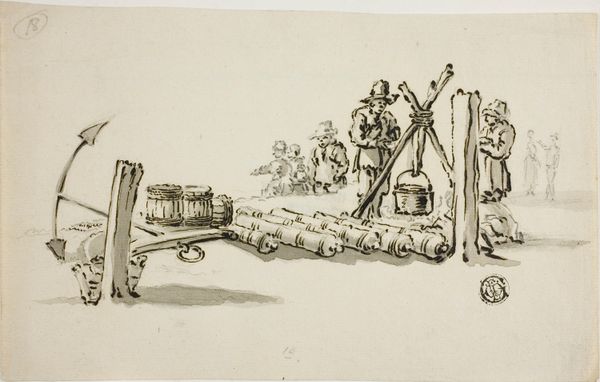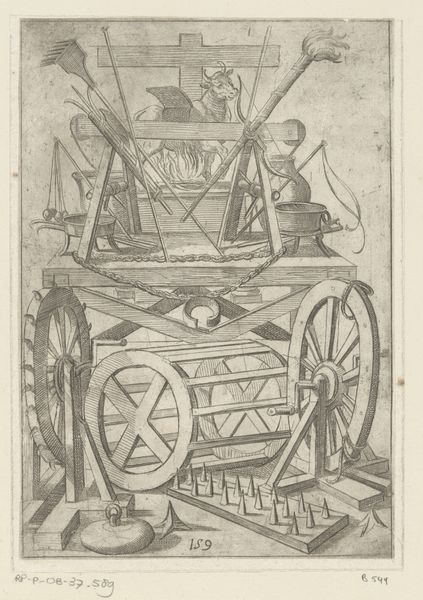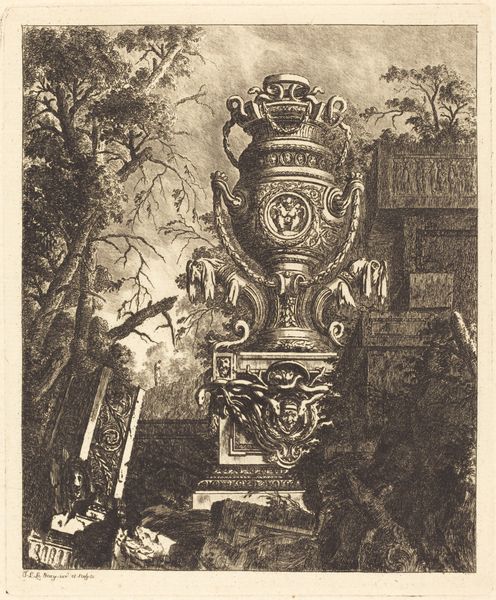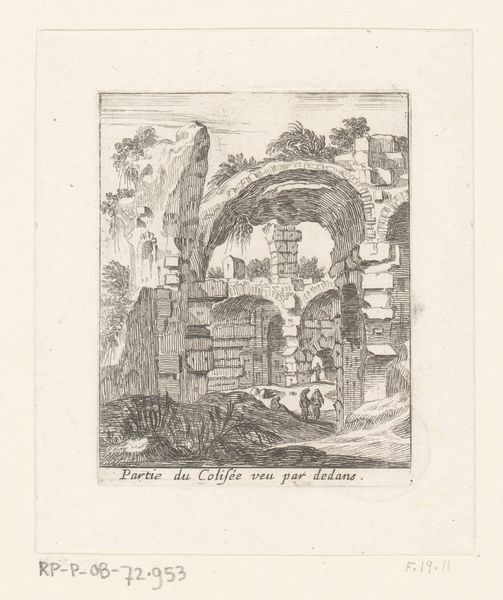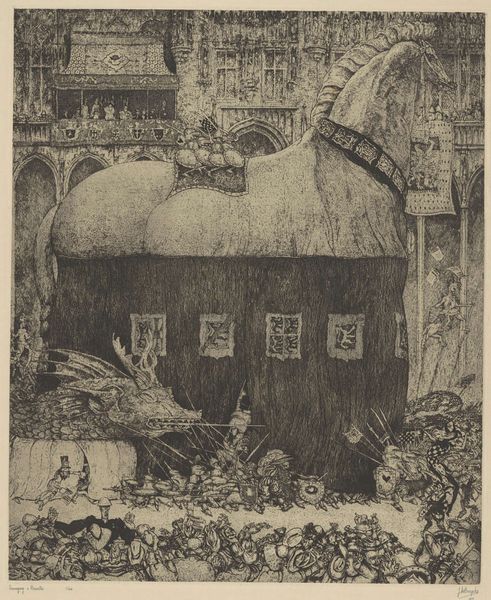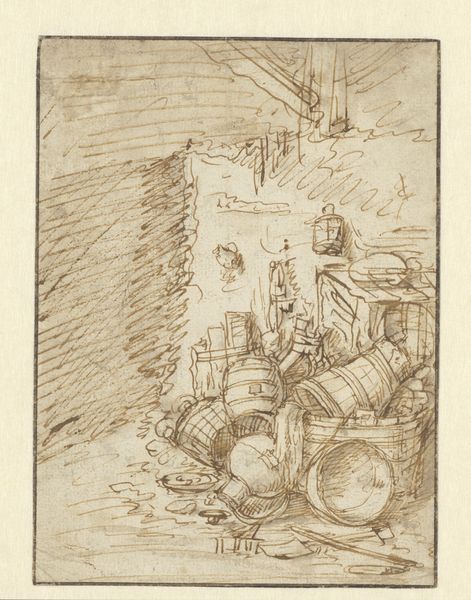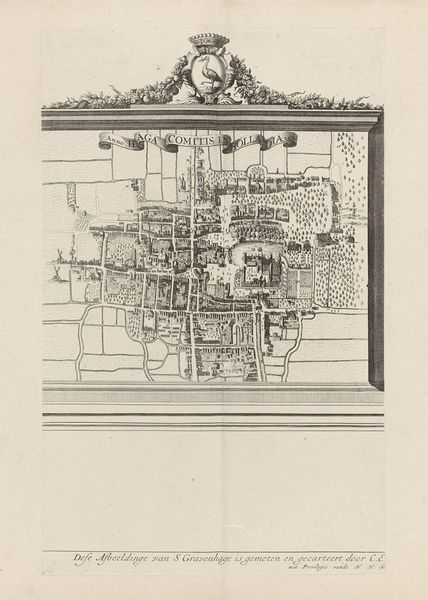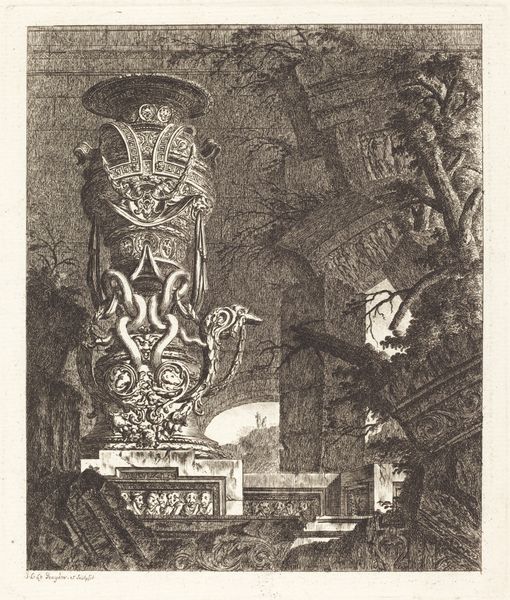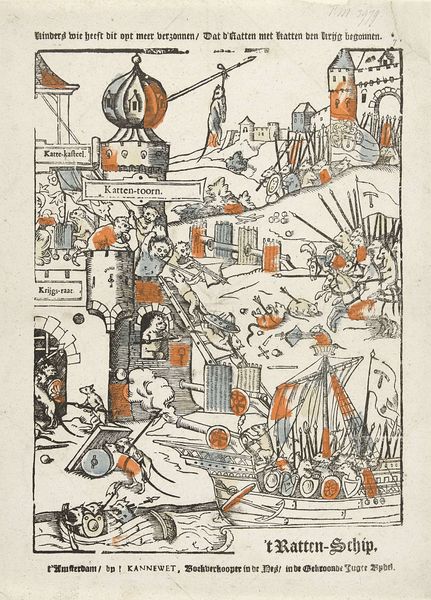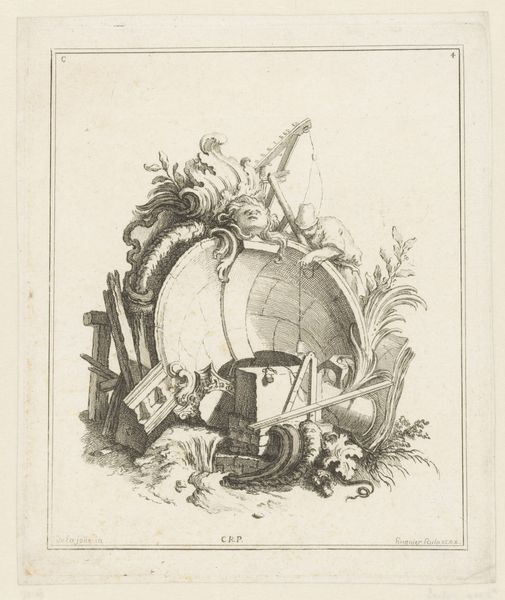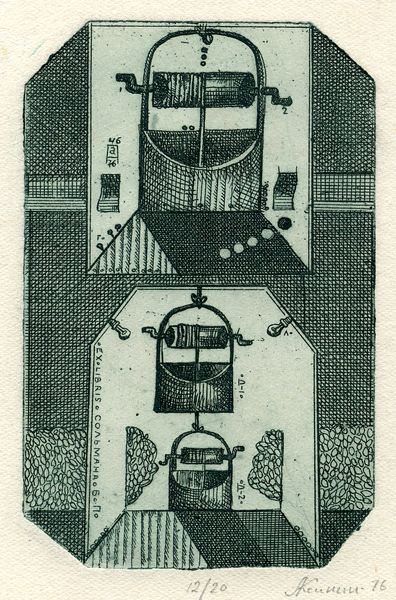
drawing, print, ink, woodcut
#
drawing
#
ink drawing
#
narrative-art
# print
#
landscape
#
form
#
11_renaissance
#
ink
#
geometric
#
woodcut
#
line
#
northern-renaissance
Dimensions: 198 mm (height) x 171 mm (width) (bladmaal)
Editor: This is *Two Wagons*, a woodcut and ink drawing from 1576 by Melchior Lorck. I find it so intriguing! The lines are so precise, creating these geometric shapes. How do you interpret this work? Curator: This piece provides a fascinating glimpse into the modes of transport and the artistic vision of the Northern Renaissance, doesn't it? It seems simple, but let’s consider the historical context. Lorck worked as a diplomat, traveling extensively throughout the Ottoman Empire. How do you think that experience might have informed his artistic perspective here? Editor: Maybe it’s about trade, the movement of goods and people? And the attention to detail seems very deliberate. Curator: Exactly! It pushes us to consider what these wagons *mean* beyond just transport. These wagons may not simply be vehicles but symbols of broader political and economic interactions between Europe and the Ottoman Empire. The "perfection" of this woodcut reminds us of the political power structures present during its creation. Editor: So, the drawing isn’t just about wagons. It's about...power? Curator: Precisely. And that leads us to other important questions: who controlled these routes, who profited from them, and who was marginalized by them? Thinking about the journeys *on* the wagon... the exploitation tied to mercantile trade and more specifically, perhaps, slavery. The wagons are full, yet this detail goes unnoticed by a contemporary viewer, and even in today's contemporary climate. Editor: That is intense. It’s amazing how a seemingly simple image can hold so much history and make you think about difficult things like power and exploitation. Curator: Indeed. Art often serves as a mirror reflecting our past and present. I am curious to research if these exact models of wagon where used in the movement of enslaved people across country lines. Editor: Thanks for sharing this perspective. It gives me so much more to consider.
Comments
No comments
Be the first to comment and join the conversation on the ultimate creative platform.
